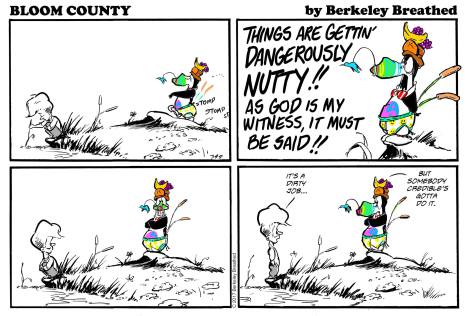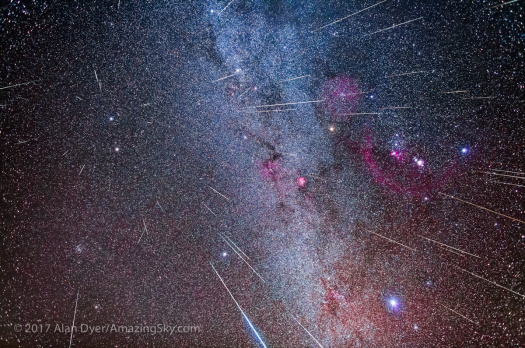
Meteors were raining down the sky on the peak night of the Geminid meteor shower.
Back in August, when I wrote my column for the November-December issue of our Canadian magazine SkyNews, I noticed how good the circumstances were this year for the annual Geminid meteor shower. Normally one of the best showers of the year, if not the best, the Geminids were really going to perform in 2017.
The Moon was near new so its light would not interfere. For western North America, the peak of the shower was also timed for midnight on the night of December 13/14, just when the radiant of the shower was high in the sky.
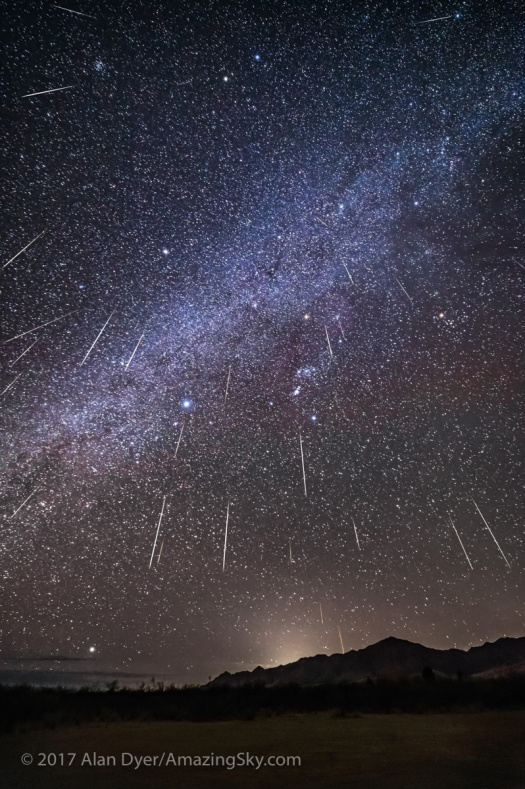 The Geminids rain down the sky from the radiant in Gemini high overhead on peak night.
The Geminids rain down the sky from the radiant in Gemini high overhead on peak night.
So in August when I saw the favourable combination of circumstances, I decided a meteor chase was in order. While the shower would be visible from home, Geminid peak night in December is often bitterly cold or cloudy at home in Alberta.
So I planned a trek to Arizona, for the shower and the winter sky.
While skies at home proved decent after all, it was still a chase worth making, with the shower visible under the perfectly clear and dry skies of southeast Arizona.
My chosen site was the Quailway Cottage near the Arizona Sky Village, the chosen dark sky site for many amateur astronomers, and at the foot of the Chiricahua Mountains. Skies are dark!
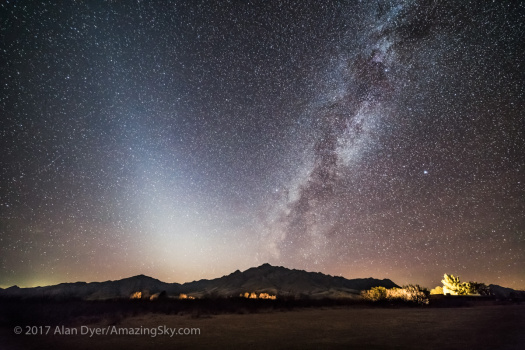 The Zodiacal Light (left) and Milky Way over the Chiricahuas.
The Zodiacal Light (left) and Milky Way over the Chiricahuas.
The Zodiacal Light was brilliant in the southwest sky for several hours after sunset. A tough sighting at this time of year from most sites, this glow was obvious in the Arizona sky. It is sunlight reflecting off cometary dust particles in the inner solar system.
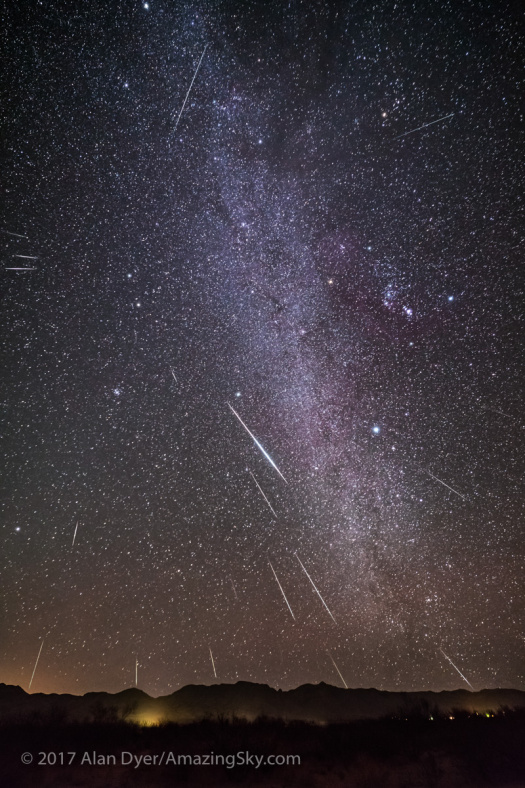 Geminids streaking from Gemini as the winter sky rises.
Geminids streaking from Gemini as the winter sky rises.
On the peak night, the visual impression was of meteors appearing at a rate of at least one a minute, if not more frequently.
 A tracked composite looking up toward Orion and Gemini.
A tracked composite looking up toward Orion and Gemini.
The images here are all composites of dozens of exposures taken over 2 to 5 hours, stacking many meteors on one frame. So they do provide an exaggerated record of the shower. Meteors weren’t filling the sky! But you certainly did not have to wait long for one to appear, making this one of the best meteor showers in many years.
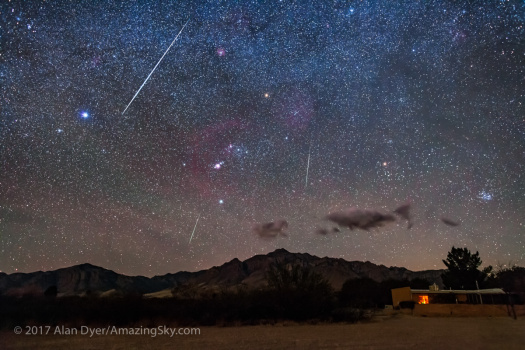 Geminids falling over the Chiricahuas as Orion sets at the end of the peak night.
Geminids falling over the Chiricahuas as Orion sets at the end of the peak night.
Most of the Geminids were of average brightness. I didn’t see, nor did the camera catch many very bright “bolides,” the really brilliant meteors that light up the ground.
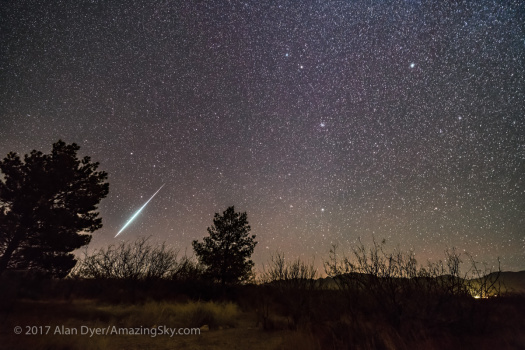 A bright Geminid pierces Ursa Major.
A bright Geminid pierces Ursa Major.
Nevertheless, this was a night to remember, and a fine way to end what has been a superlative year of stargazing, with a total solar eclipse, great auroras, and for me, a wonderful stay under southern skies on an April trip to Australia.
All the best of the season to you and your family and friends. Clear skies!
Here’s to 2018, which begins with a total eclipse of the Moon on January 31.
— Alan, December 23, 2017 / © 2017 Alan Dyer / AmazingSky.com
Share this:



